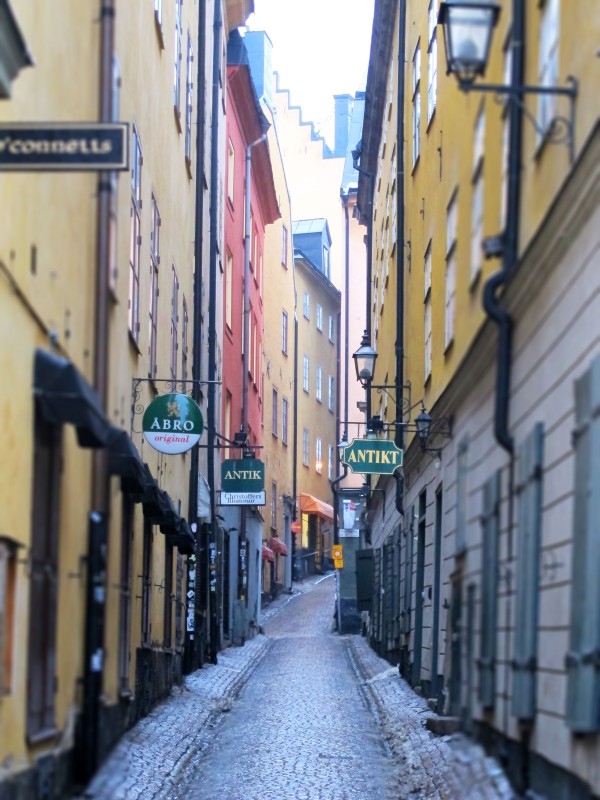
Sweden’s most well-known exports today are IKEA furniture and H&M clothing, which means my impression of the country is one of sleek modernism. Naturally, Sweden does have a history and is rightfully proud of its past accomplishments, I’ve simply never bothered to learn anything about them. So when I began researching this trip, I was a bit surprised at all the recommendations to see the Royal Palace. To be honest, before this trip, I didn’t even know Sweden still had a royal family. It seems a rather archaic institution to support (the state still funds them partially), though I guess the tourism benefits now outweigh any concerns about the monarchy trying to regain control. (More below.)
Many of Stockholm’s tourist attractions are concentrated on the island of Gamla Stan, or Old Town. Within these winding, medieval lanes, you’ll find the Royal Palace, the Riddarholmskyrkan Cathedral, the Nobel Museum and more. The Royal Palace entrance fee is a bit steep (150 SEK/$23 for adults or 75 SEK for students), however you do get entrance to three attractions: the Royal Apartments, the Treasury and the Tre Konor (Three Crowns) museum. Photos are not allowed in any of the Royal Palace exhibits, so I had to content myself with taking photos outside.
The changing of the Royal Guard takes place at noon each day, and while it was not as showy as say, the India-Pakistan border guard changing, it’s still fun to watch if you happen to be in the area. One thing I noticed was there were at least two female members, the first time I’ve ever seen women as part of a royal guard. I did a little bit of Googling and couldn’t figure out if Sweden was the first to do this, but at any rate they win points for being progressive!
I jumped into an English-language tour of the Treasury and learned the following tidbits on Sweden’s medieval history:
- The Royal Regalia includes 5 items (listed in order of importance): sword, crown, scepter, key and orb
- Tre Konor (Three Crowns) is the name of the original royal castle that was destroyed in a fire in 1697. The Swedish Coat of Arms also includes three crowns on it. Why three? One leading theory is that the three crowns represent the three parts of Sweden (Sweden, Norway and Denmark). That’s right, far from being amiable pacifists, the Swedes were out to conquer everything they could get, especially their neighbors. Another theory is that the crowns represent the three Wise Men, thus symbolizing the divine right of the king to rule.
- In Sweden, the absolute monarchy was outlawed in 1720. But like a zombie attack, the old kings and queens constantly plotted to regain power again, and did so successfully in 1772. King Gustav III introduced the Union and Security Act to fully restore the royal autocracy in 1789 (when the French Revolution began).
- Sweden’s queens seem to be more colorful and strong-willed than the kings. My favorite is Queen Louisa Ulrika, who was a pen pal of Voltaire, and highly annoyed by her mild-mannered husband, who was uninterested in getting more power. So in 1756, Queen Louisa Ulrika removed 44 diamonds from her crown and shipped them to Berlin to get funding to stage a coup d’etat. Unfortunately, she was found out, and many heads were beheaded except for hers, since the Queen was more or less beyond the law.
- The Coronation Robe is ruby red (the color of royalty) with ermine fur trimming because it was thought that ermines would rather kill themselves than get their fur dirty.
- In 1980, the constitution was reformed such that the oldest child would become the next King or Queen, not the oldest son. That meant Princess Victoria became next in line for the throne, not her younger brother Prince Carl Philip, who was about 6 months old at the time.
- None of these regalia items are actually used or worn nowadays, other than for ceremonial purposes like christenings and funerals. In those cases, the crown is placed on a pillow.
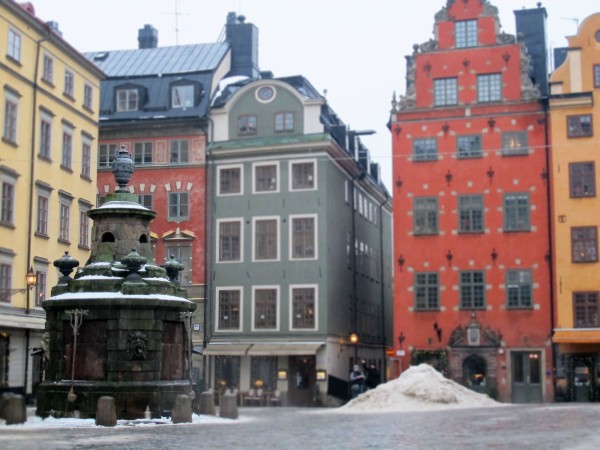
Stortorget Square, the heart of Gamla Stan
Upstairs from the basement trappings of the Treasury, you can see the Royal Apartments. There are actually several sections, with the Bernadotte Apartments decorated in lavish 17th and 18th century style and the very grand official State Apartments, which felt like being inside Versailles. In fact, there is a long hall in the State Apartments that is modeled after Versailles’ Hall of Mirrors. At the far end of the State Apartments is the White Ballroom. The last time it was used for a ball was at Princess Victoria’s wedding in 2010, when the room was turned into a disco.
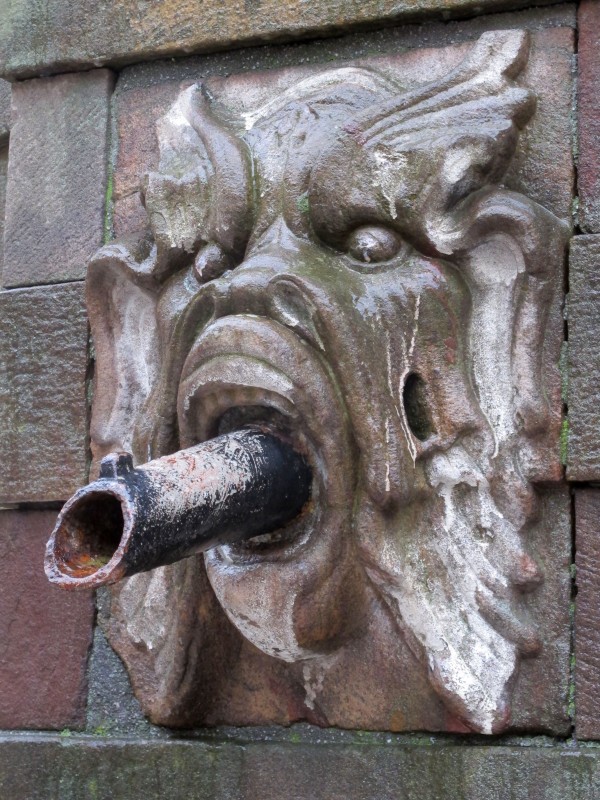
Lion spout on the fountain in Stortorget Square
According to one of the plaques in the Bernadotte Apartments, nobles used to be invited to dinner at the Royal Palace, not to eat but to stand and watch. What an honor! With 32 courses of food being served in a night, I hope that these aristocrats ate plenty beforehand.
Inside the Hall of State, you can see the Swedish throne and an exhibit on current King Carl XVI Gustaf, who recently celebrated his 40th year on the throne. The exhibit does a great job of tying the traditions of the Swedish monarchy with modern times. Each king chooses a motto at the beginning of his reign, and King Carl’s motto is Für Sverige, i Tiden, or For Sweden, with the Times. The neatest section is the King’s wardrobe display, which includes the usual tuxedo and suits, along with a scuba diving outfit, hiking gear, an H&M jacket and an Olympics jacket. The exhibit also describes how he became king at the age of 27 after his grandfather passed away (Dad died in a plane crash earlier). It takes a lot of stamina to speak loudly enough to be audible in the large Hall of State (there was no amplification at that point), and Carl practiced through the night to make sure he would project loudly enough for the next day’s coronation.
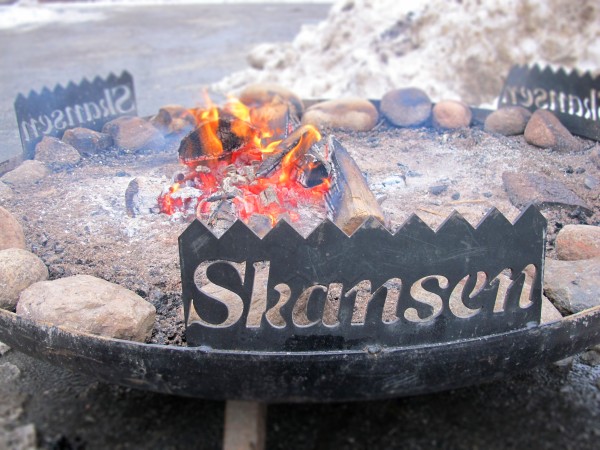
My next stop was Skansen, an open-air living history museum featuring Swedish village life set in 19th century. The museum was founded in 1891 by Artur Hazelius as Sweden underwent rapid industrialization. Hazelius saw that a way of life was being lost and wanted to preserve it. Most of the homes and buildings in Skansen are from the 18th, 19th and early 20th centuries. People wearing historical costumes play the roles of farmers, craftsmen and traders, answering questions and demonstrating activities like spinning or glassblowing.
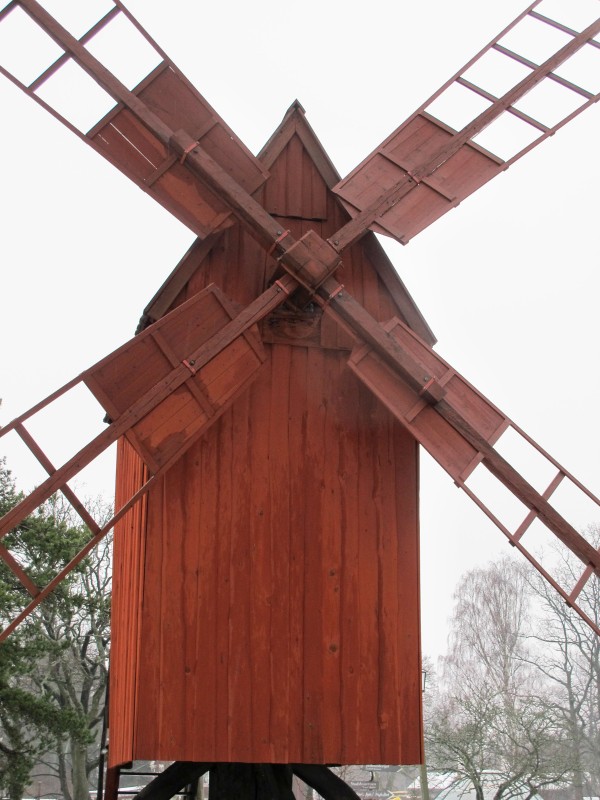
Winter is not the ideal time to visit Skansen, since many of the buildings are closed, the paths are slushy with snow and most of the animals are cooped up inside their barns. On the other hand, admission is a bit cheaper (100 SEK vs 160 SEK in the summer). It’s also much quieter and more peaceful in the winter, and you essentially have the full attention of the historic roleplayers. As the schoolteacher explained, “In the summer, I am more of a guard for school tours. Now, we can actually have a conversation and I can learn something from my visitors too.”

Inside the printer’s workshop, vintage printing blocks were stacked neatly in cases.
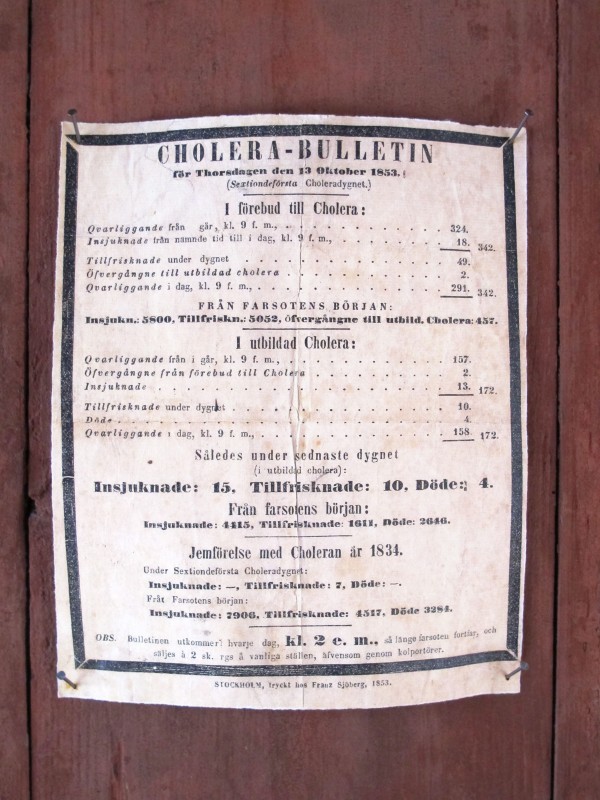
The printer makes notices for the rest of the village and provides newspapers which are then used by the general store as wrapping paper.
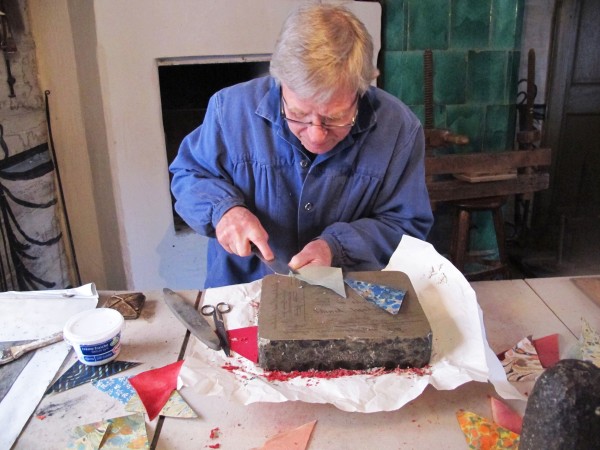
Inside the bookbinder’s workshop, you could see how leather was thinned and shaped for book covers.
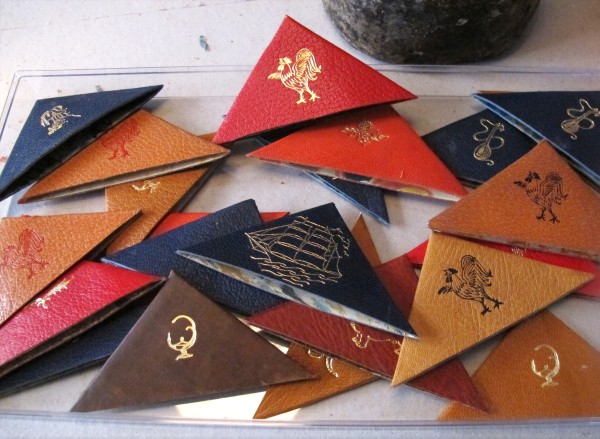
These bookmarks fit into the corners of pages and are embossed with gold. An elegant alternative to the usual rectangular bookmark.
At first I thought this gentleman was a staff member in period dress, but when he asked me for directions, I realized he was just another visitor. In which case, he definitely wins Best Dressed–check out that twisted walking stick!

Skansen houses a number of farm animals like sheep and horses, and native Scandinavian animal, like reindeer, elk, brown bears, wolverines and foxes. I tried to pet this reindeer, but it was much more interested in eating the moss on the ground.
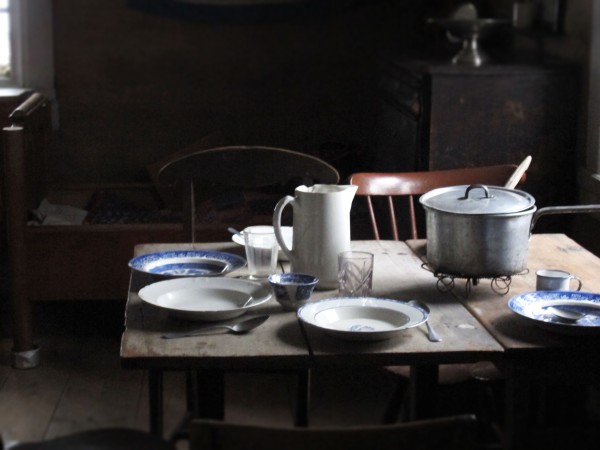
This farm laborer house is set in 1920, and the last family to inherit it was an elderly couple who had stayed there for over 30 years. They were essentially peasants, paid in food and housing. Since they did not have much in cash savings, it was nearly impossible for them to take on other types of jobs. Typically, these types of farm laborers signed on for year-long contracts, with the option to renew or leave in October, after the harvest.
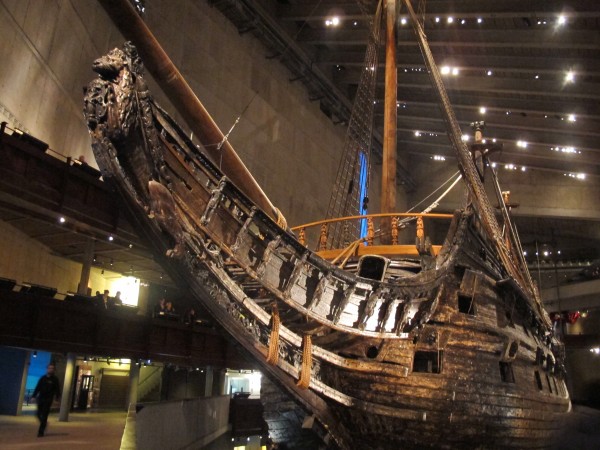
Finally, the Vasa Museum houses a Swedish warship that sank in 1628. The work done to restore and preserve this shipwreck beginning in 1961 is incredible; there’s no other maritime preservation project on this scale anywhere else in the world. The ship itself is massive, with 64 cannons and a crew of 450 sailors. You can climb up to balconies to inspect the ship more closely at different levels, from the crow’s nest above to the anchors below.
Though the ship is a rustic brown now, when it was launched the exterior was brightly decorated with carvings of angels, gods, and in one case, Polish men. Wait, why? Well, at the time, Sweden and Poland were at war, and so the male figures carved under the ship’s catheads (a beam used for raising the anchor) were meant to represent Polish noblemen, crouching in fear. Take that, Poland!
With its shiny new cannons and an unprecedented TWO gun decks on board, the Vasa was supposed to be the star of Sweden’s military fleet. Unfortunately, it was not meant to be. A combination of bad engineering, conflicting orders from an impatient king, and the fear of displeasing him caused the ship to be constructed and launched without the proper amount of ballast. The hold only carried 120 stones of ballast, an insufficient amount for such a tall ship, but to add more ballast would put the gun decks too close to the waterline. Even in slight breezes, the Vasa was tipping from side to side. The ship’s stability was further tested by a group of 30 sailors running back and forth across the deck, and the ship swayed so heavily the captain had them stop for fear that the ship would capsize. Despite all this, the ship was launched anyway, and capsized on her maiden voyage, just 1500 m away from port.
An inquest was held after the ship’s sinking to determine the cause. Swedes were aghast, shocked at the quick demise of the ship and murmuring that it was the result of a punishment from God, or a conspiracy from foreign powers. In the end, no one was convicted.
Today, the Vasa Museum works to preserve the ship and glean more information about its builders and occupants. Each piece of recovered wood was carefully sprayed with polymer polyethylene glycol (PEG) to prevent further rotting, and a frame was built to support the ship on land. Scientists believe the ship is still sinking at a rate of 1 mm/year though, so the museum plans to build another stronger frame. The museum is also learning how to control climate conditions inside the museum to better preserve the wreck while keeping the room comfortable enough for visitors to enjoy. Ironically, the waters of Stockholm Harbor were actually ideal for preserving a shipwreck: the dark depths prevented damage from ultraviolet light and cold temperatures slowed bacterial rot.
Let’s hope that we can preserve the Vasa shipwreck for another 400 years.


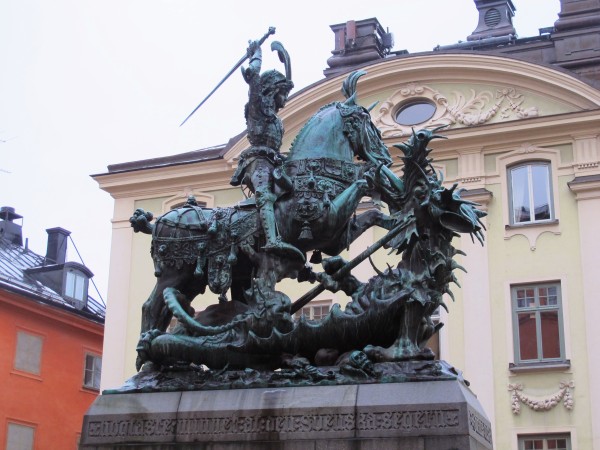




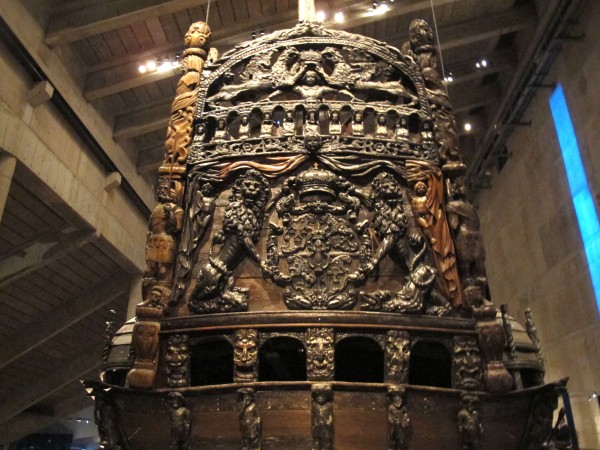
2 thoughts on “Historic Sweden: Royal Palace, Skansen, Vasa Museum”